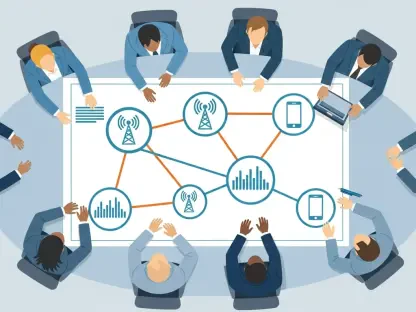The modern telecommunications sector faces a relentless battle against scam calls that exploit every possible loophole to appear legitimate. Fraudsters, by manipulating caller IDs through a method called “spoofing,” create chaos, leading to significant financial crimes like SIM-swapping. Traditional methods of blocking scam calls are often ineffective. Ofcom, the UK’s telecom regulator, reported blocking over a million scam calls per day, yet fraudsters adapt swiftly. This review examines the innovative Caller ID Protection technology, offering an in-depth look at its core principles, features, recent advancements, real-world applications, challenges, and future outlook, while also considering regulatory efforts to combat fraudulent activities.
Core Principles and Context
Caller ID Protection technology has evolved as a response to growing threats within the telecommunications sphere. Fundamentally, it is designed to ensure the authenticity of the calling number, preventing unauthorized access or manipulation. The essence of this technology lies in its ability to identify and verify calling sources, ensuring that calls reaching consumers are genuine. This technology carries significant relevance because it is integrated into a broader trend toward heightened cybersecurity measures, a necessity in today’s technologically advanced world where digital fraud continues to rise.
Developed over decades of advancement, Caller ID Protection aligns with the overarching objectives of digital safety and consumer protection. It represents a profound shift from traditional methods, introducing sophisticated mechanisms that directly address the vulnerabilities of earlier systems. This shift strengthens the foundation upon which secure communication networks are built, providing an essential service in an era where digital and telecommunication landscapes continue to merge.
Spoofing Prevention and Caller Authentication
A critical component of Caller ID Protection is its spoofing prevention mechanism. This feature functions by examining and authenticating the origin of calls, effectively filtering out those that employ fraudulent tactics to appear trustworthy. Performance metrics have shown significant improvements when this mechanism is implemented, as it substantially reduces the success rates of scam attempts. Its importance cannot be overstated, as it secures communication channels against one of the most pervasive forms of telecom fraud.
Equally vital are advanced caller authentication techniques that delve deeper into verifying caller identities. These methods utilize a range of technical protocols to ensure that the ID displayed matches the legitimate caller, not an impersonator. In practical applications, these techniques have demonstrated robustness, showing improved identification accuracy, thereby enhancing consumer trust and confidence in telecommunication channels. Their implementation is often necessary for industries where secure communication is paramount, offering an indispensable layer of protection against fraudulent activities.
Innovations and Emerging Trends
Recent years have seen significant developments in Caller ID technology, marked by new innovations and shifts in consumer behavior that influence its evolution. Several telecom companies now collaborate to share intelligence and data, creating comprehensive systems capable of adapting to new threats. This collaboration has led to innovative solutions aimed at detecting and blocking fraudulent calls more effectively.
Emerging trends in consumer behavior also play a role in this evolving landscape. An increasing demand for secure and reliable communication tools drives technological advancements as well. These dynamics not only bolster existing systems but also encourage the exploration of novel approaches, paving the way for continued refinement and progression in Caller ID technologies.
Industry Use Cases and Applications
Caller ID Protection finds extensive application across a multitude of industries. Financial institutions, healthcare providers, and government agencies, among others, have adopted these technologies to secure sensitive communications. In financial services, for example, secure authentication processes are crucial, given the sensitive nature of transactions and the potential financial repercussions of fraud.
Unique and notable implementations are evident within healthcare sectors, where ensuring the authenticity of telemedicine consultations and communications is critical. Telecom regulators, like Ofcom, have initiated policies encouraging these sectors to integrate such protections, resulting in a widespread impact on various facets of industry operations and enhancing overall security protocols.
The Challenges Ahead
Despite its promising capabilities, Caller ID Protection faces several challenges, including technical limitations and regulatory compliance issues. One significant hurdle involves adequately blocking scam calls without disrupting legitimate communications. Incorporating such protective measures requires investment and infrastructure updates, which some entities may be slow to adopt due to financial and logistical constraints.
Furthermore, regulatory obstacles present additional challenges, as different regions may have varying standards and requirements, affecting the seamless deployment of these technologies. Continued efforts focus on addressing these issues through technology refinement and industry-wide collaboration, promoting more uniform standards that support broader acceptance and implementation.
Future Developments and Considerations
The outlook for Caller ID Protection technology hints at continued evolution and enhancement, with potential breakthroughs that could redefine its impact. Anticipated future developments include enhanced machine learning capabilities capable of predicting and identifying new scam patterns before they become widespread. The ongoing integration of AI technologies serves as a promising frontier, offering unprecedented levels of accuracy in caller identification and protection.
The long-term implications for industries and society suggest that robust Caller ID Protection could drastically reduce fraud-related incidents, increasing consumer confidence. Additionally, these advancements could foster greater collaboration among global entities, further strengthening the cybersecurity landscape as a whole.
Reflection on Caller ID Protection
In summary, Caller ID Protection technology has emerged as a vital component in the fight against telecommunications fraud, significantly impacting how digital security is approached across various sectors. While it presently faces several technical and regulatory challenges, continuous development and innovation hold promise for future improvements and broader adoption. By mitigating scams effectively, this technology has laid the groundwork for safer, more secure communication networks, reflecting an essential step forward in protecting consumer interests worldwide.









